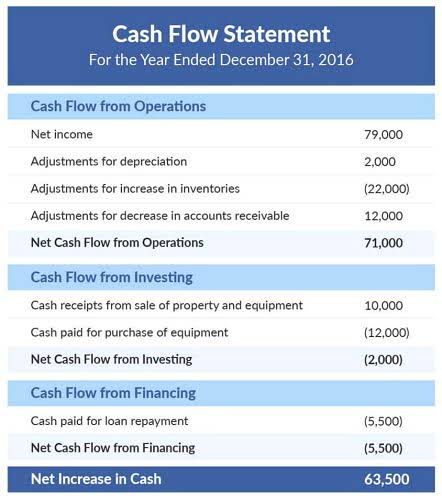Product cost vs period cost definitions, examples, differences Termscompared

In short, all costs that are not involved in the production of a product (product costs) are period costs. In order to effectively analyze and understand a company’s financial performance, it is crucial to identify and categorize the different of period costs. Period costs are expenses that are not directly related to the production of goods or services, but rather incurred over a specific time period. These costs are considered operating expenses and are deducted from revenue to determine net profit.
Product Costs vs. Period Costs
Period costs or period expenses are specific type of expenses a company may incur during an accounting period Bookkeeping for Consultants without being able to link it to inventory or cost of goods sold. In other words, period costs are expenses that are not linked to the production process of a company but rather are expenses incurred over time. Weighted-average costing mixes current period expenses with the costs from prior periods in the beginning inventory. This mixing makes it impossible for managers to know the current period expense of manufacturing the product. First-in, first-out (FIFO) costing addresses this problem by assuming that the first units worked on are the first units transferred out of a production department.
Understanding Period Costs
The $10 direct materials would be a debit to cost of goods sold (increasing) and a credit to inventory (decreasing). In general, overhead refers to all costs of making the product or providing the service except those classified as direct materials or direct labor. Manufacturing overhead costs are manufacturing costs that must be incurred but that cannot or will not be traced directly to specific units produced. In addition to indirect materials and indirect labor, manufacturing overhead includes depreciation and maintenance on machines and factory utility costs. A few good examples of period costs are advertising and administrative salaries.
A summary of the concept of product cost and period cost
- By implementing effective cost allocation methods, businesses can gain insights into their cost structure, enhance decision-making capabilities, and ultimately drive sustainable growth and profitability.
- The First-in, First-out (FIFO) costing method solves this by using the costs of the earliest-made products first.
- Since these costs are charged in the period incurred, businesses can reflect on how well they managed their expenses within a specific period – often quarterly or annually.
- Out of these 500 units manufactured, the company sells only 300 units during the year 2022 and 200 unsold units remain in ending inventory.
Examples can include marketing expenses, administrative salaries, rent, or utilities. Typically, managerial accountant want to classify expenses in categories that can improve operations. Instead, these expenses are attributed to selling and general administrative activities. Liabilities are normally things that are settled over time through the transfer of money, goods, or services. Liabilities can either be short-term obligations that are due within one year of a normal accounting period, or they can be long-term liabilities and are not due for more than one accounting period. By definition, period costs are costs that are incurred during one accounting period and are not tied to the production of a product or the inventory costs.
Period vs. Product Cost Comparative Table

Say goodbye to the hassle of building a financial model from scratch and get started right away with one of our premium templates. Such cost classifications have been proven useful to people, like most analysts who develop several costs, classifying them per their uses in various managerial applications. Identifying and categorizing these costs is important as different purposes require different cost constructs. Learn about emerging trends and how staffing agencies can help you secure top accounting jobs of the future. A paradigm case is the increase in hiring from countries like the United States to the region. The reality is that more and more companies are looking for professionals willing to work for lower salaries than in the U.S., but higher compared to those in their own countries.
Direct Labor

TranZact offers a valuable resource for Indian Manufacturing SMEs needing help with period costs. By using TranZact’s inventory and period costs calculator tools, businesses can manage the challenges of financial management. TranZact helps businesses focus on understanding fixed costs using reliable inventory valuation methods. In addition, knowing and managing capacity costs provides a key advantage for companies looking to improve their financial decision-making processes. Period Costs are typically classified as selling, general, and administrative expenses (SG&A) on the income statement. Examples include assets = liabilities + equity salaries and wages, rent, utilities, marketing expenses, and depreciation.
- Common methods of indirect allocation include the use of predetermined overhead rates or activity-based costing (ABC) systems.
- These costs are related to the creation of products and are considered assets until the products are sold.
- Selling expenses are costs incurred to obtain customer orders and get the finished product in the customers’ possession.
- The significance of period costs extends beyond mere accounting entries to become a cornerstone in shaping business tactics and financial health.
- By implementing best practices for managing period costs, businesses can optimize their expenses, improve their bottom line, and gain a competitive edge in the market.
- Indirect labor consists of the cost of labor that cannot, or will not for practical reasons, be traced to the products being manufactured.
- In the intricate world of accounting and management, period costs stand as a critical concept that influences financial reporting and strategic decision-making.

The report argues that companies are looking to hire personnel from outside high-cost countries, such as Argentina and India, due to the demand for talent and the shortage of candidates for certain vacancies. Working with an international company or a multinational with a solid global presence is undoubtedly one of the best ways to boost and improve a resume. That’s why so many professionals or workers seek to get employed by foreign companies or multinationals that offer greater opportunities for career growth. Dynamic platform dedicated to empowering individuals with the knowledge and tools needed to make informed investment decisions and build wealth over time. If the amount produced increases, the fixed cost per item decreases, and what are period costs vice versa. Looking to streamline your business financial modeling process with a prebuilt customizable template?
Create a free account to unlock this Template

These costs are included as part of inventory and are charged against revenues as cost of sales only when the products are sold. In other words, they are initially classified as assets and are transferred to expense when they are sold. Product costs, on the other hand, are expenses that are incurred to manufacture a good and can typically be traced back to a specific product. Period costs are expenses that are not directly tied to the production of goods or services.
Advertising, market research, sales salaries and commissions, and delivery and storage of finished goods are selling costs. The costs of delivery and storage of finished goods are selling costs because they are incurred after production has been completed. Therefore, the costs of storing materials are part of manufacturing overhead, whereas the costs of storing finished goods are a part of selling costs. Remember that retailers, wholesalers, manufacturers, and service organizations all have selling costs.

